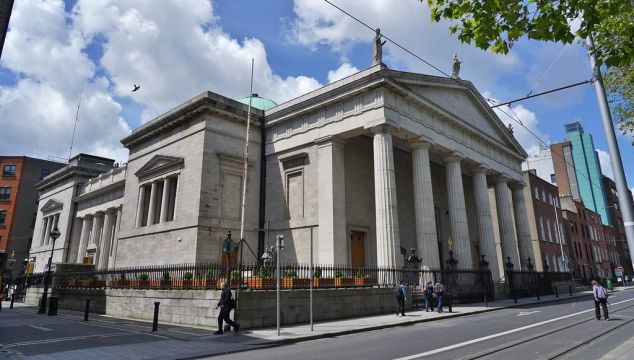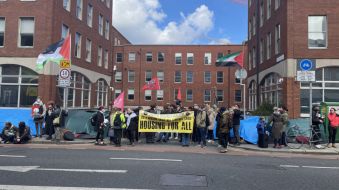Issues around moving the Pro-Cathedral from north to south of the River Liffey continued to be worked upon following an announcement six months ago that Archbishop Dermot Farrell proposed a change despite opposition to the move.
Last month, Dublin City Council called on Archbishop Farrell to attend a meeting with them to explain why he wants to move the Catholic Pro-Cathedral from the north to the south of the city.
At a meeting of the Council’s Central Area Committee, a motion was passed opposing the “downgrading” of St Mary’s Pro-Cathedral to a basilica. It is due to be discussed again this coming week.
The motion was brought by Independent councillor for the north inner city and a former Lord Mayor of the capital, Christy Burke, asking the “Archbishop into City Hall in December as to why his office has had no consultation with local residents, service goers or Committee members” about the proposal.
The Pro-Cathedral, which has been in existence for almost 200 years north of the River Liffey in St Mary’s on Marlborough Street, may be about to lose its current status and become a basilica, while St Andrew’s Church on Westland Row, south of the Liffey, would become the capital’s cathedral under a current diocesan plan.
Plans on the relocation are due to be presented to Rome by the end of the month to ascertain if the move is given the go-ahead by Vatican authorities. The announcement by the Archbishop was made last June.
However, a spokesperson for the Archbishop’s office said over the weekend that they have “not received any communication from Dublin City Council” on the issue.
The spokesperson continued that “the issues around this proposal are still being considered carefully” by the Archbishop and the project group that he has set up, ahead of any recommendation being made to Rome.
“The parishioners of both St Mary’s and St Andrew’s have been consulted and their views will be taken into account,” the spokesperson noted.
“Both churches will play a central role in the future pastoral strategy of the Archdiocese for outreach to the city. The primary issue to be considered is serving the mission of the Church in proclaiming the Gospel in Dublin into the future.”
Archbishop Farrell said he believes the capital should have a “properly designated cathedral” and that it should be complemented by a church on the other side of the Liffey whose "status and dignity are formally recognised and supported".
The proposed relocation is being explained for “logistical reasons” as there are strong grounds for considering that St Andrew’s might better serve the cathedral function, with St Mary’s changed to a basilica.”
The Archbishop has set up a project group with representatives of both St Mary’s and St Andrew’s parishes to develop proposals, supported by expert and technical advice.
St Mary’s has provided a focal point for the archdiocese, but it was always envisaged that, at some point, a cathedral building would be required that had both the space and the facilities to accommodate the full range of diocesan liturgical and pastoral ministry.
For a variety of reasons, that never happened but "the limitations of the St Mary’s building and complex remain,” the Archdiocese previously pointed out.
In a statement the Archdiocese previously highlighted that Dublin city has changed and developed.
“While St Mary’s is located in an area undergoing renewal and development, on the south side of the Liffey recent and planned commercial and residential development have created a whole new dimension of city life.
“St Andrew’s Church, Westland Row, which was built shortly after St Mary’s, is well placed to engage with the vibrant residential, commercial and cultural heart of the city,” the statement concluded.
Central Static Office figures show that while Catholicism remains the most popular religion in Ireland, its influence has fallen substantially. From a high of 85 per cent in 2011 it now stands at 69 per cent.







